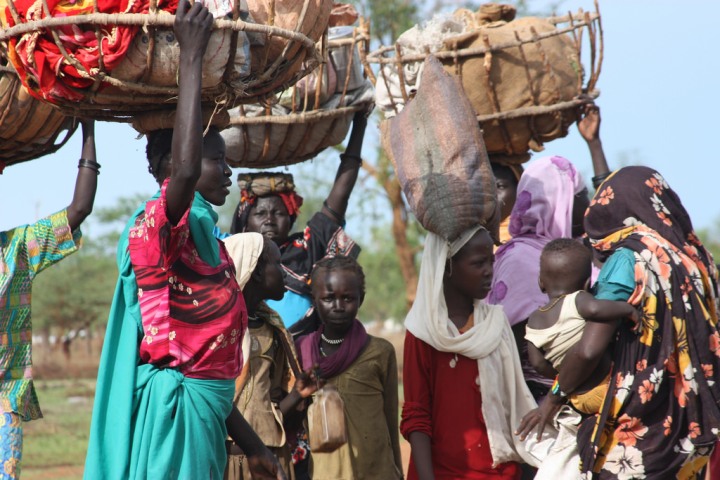IOM remain optimistic about sustainable returns for IDP communities in South Sudan
The International Organization for Migration (IOM) embraces this prospect of stability in the world’s youngest country and is scaling up its response to returnees across the country.

- Country:
- South Sudan
Eight months after the signing of the revitalized peace agreement in South Sudan, some communities uprooted from their homes are on the verge of going home. The International Organization for Migration (IOM) embraces this prospect of stability in the world’s youngest country and is scaling up its response to returnees across the country.
The UN’s Central Emergency Response Fund (CERF) recently awarded funds of USD 2.6 million that will allow IOM to ensure that internally displaced persons (IDPs) who choose to return are met with basic services enabling them to rebuild their lives – particularly in Western Bahr el Ghazal, Western Equatoria and the Unity States.
Multiple years of conflict in South Sudan have displaced nearly two million within the country. Approximately 180,000 IDPs have found refuge on six UN bases, called Protection of Civilian (PoC) sites, where humanitarian agencies, like IOM, offer relief.
“We remain cautiously optimistic about the prospect of sustainable returns for IDP communities in South Sudan,” said IOM South Sudan Chief of Mission, Jean-Philippe Chauzy. He added: “While it’s still premature to scale up these operations en masse, newly offered services should be available in areas where people are willing and able to return.”
Besides surveying IDPs, IOM also monitors mobility trends through its Displacement Tracking Matrix (DTM). In its latest round of mobility tracking – covering 87 per cent of the country and reaching 1.2 million IDPs – DTM identified over 860,000 returnees, of whom a third returned last year.
Through close engagement with local governance structures and partners in the PoC sites, IOM will ensure returnees start their journeys home with relevant information and adequate assistance.
IOM also will provide construction materials to more than 50,000 returning households so they can rebuild burnt, looted or damaged homes. And the Organization will provide small grants to returnee communities, allowing them to invest in local markets.
More than half of the South Sudanese population lacks access to health care services. IOM Mobile Health Clinics will thus target returnees in hard-to-reach areas – providing maternal and child health services, immunizations, as well as mental health and psychosocial support.
The rehabilitation of boreholes and latrine construction activities by IOM – along with other water, sanitation and health activities – will help prevent and mitigate water-borne diseases ahead of the coming rainy season.
Clashes and displacement continue throughout the country, so for many displaced communities safe and sustainable return is not yet an option. IOM’s DTM found that 20 per cent of people currently displaced were forced to flee in the last year, mainly by conflict and communal clashes.
One example: Wau County. Relative stability reigns in Wau Town, which has enabled increased returns. In surrounding areas such as Baggari, Beselia and Kuarjena, ongoing violence has triggered new influxes of IDPs to PoC sites and collective centres.
“While UN protected sites are not a durable solution, they remain lifesaving, last resort for many vulnerable people caught in the conflict. IOM remains committed to humanitarian assistance centred on the needs of affected populations, both in displacement sites and areas of return,” said Chauzy.
DTM’s latest flow monitoring exercise, which offers indicative findings on movement in and out of the PoC sites, illustrates significant numbers of people moving between the sites, surrounding areas and their previous homes. Many residents leave temporarily to engage in economic activities, visit their families or check on or repair their properties outside the PoC sites – taking cautious and gradual steps which can prepare the ground for return.
For those exiting permanently, perceived improvement in the security situation or living conditions, as well as family reunification are main reasons underpinning the decision to return. Prerequisites such as improved security and access to services, particularly healthcare, were deemed essential in DTM’s latest intention/perception survey with PoC site residents in Wau.
IOM and partners will continue to monitor carefully these evolving return trends and intentions, identify gaps in services and infrastructure, and work to improve conditions in areas of return.
(With Inputs from APO)










